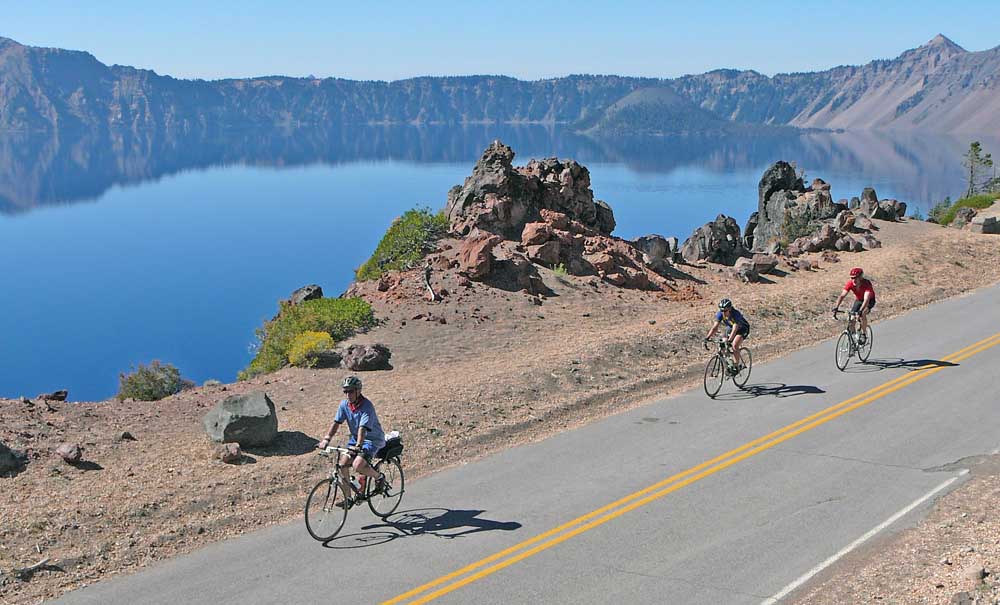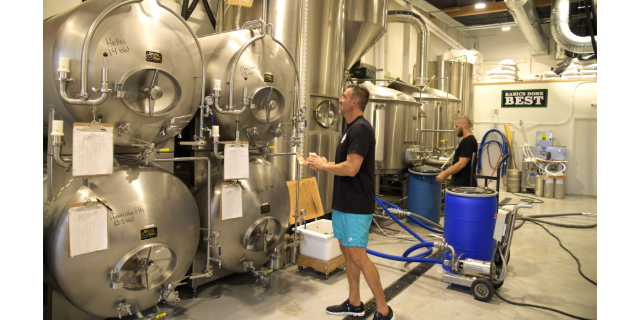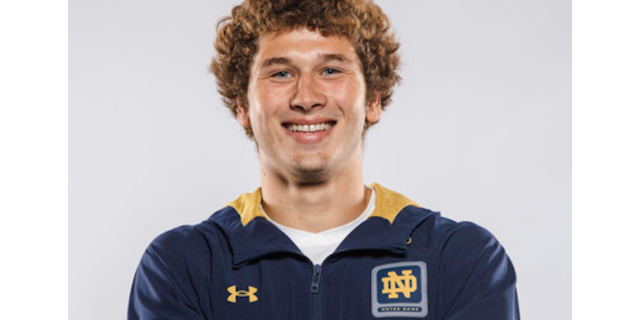Wildlands center updates guide on how to prepare for wildfire and smoke
Published 12:45 pm Friday, July 14, 2023

- About 2,600 people are already registered for the annual Ride the Rim event at Crater Lake National Park Sept. 9 and 16.
Just in time for fire season, the Klamath Siskiyou Wildlands Center of Ashland has updated its Forest & Fire Toolkit, a free 32-page, full-color, how-to guide on preparing for wildfire.
Trending
The guide, first produced two years ago, provides a range of advice, including how to prepare properties for fire and households for evacuation. New to the toolkit is a section on living with wildfire smoke and a section on grants and assistance to help with home defense, such as vegetation management.
“The best time to prepare for wildfire is before the fire starts,” said Alexi Lovechio, lead editor for the toolkit.
The publication, available online, also contains a section discussing the benefits of prescribed burning, which typically takes place in the off-season and involves the use of low-intensity fire across the landscape to reduce forest fuels.
Trending
“We think we should see more (prescribed burning),” Lovechio said.
One downside of any burning is smoke. Suggestions on dealing with wildfire smoke include consulting outdoor air quality readings online at AirNow.gov and limiting exposure accordingly. If you have an air conditioner, use it and keep filters clean, the guide suggests. Also, consider wearing an N95 or N100 face mask.
People might want to consider purchasing a High Efficiency Particulate Air grade indoor air purifier for use in a room where you spend most of your time, according to the advice. Or you can build your own low-cost box fan filter.
The toolkit contains a directory of agencies and organizations involved in forestry and fire management. Contributors to the publication include Lomakatsi Restoration Project, Illinois Valley Community Development Association and A Greater Applegate, among others.
“This is part of an ongoing effort to prepare the communities of the Klamath-Siskiyou for wildfire,” Lovechio said.
“There is no future free from wildfire, but there are actions we can take to help prepare for the next one,” she said.
To view the toolkit, see kswild.org/climate-change.
Scenic byway planning meetings set in Gold Hill, Prospect
The Federal Highway Administration has
announced open house meetings to be held Aug. 8 in Gold Hill and Aug. 9 in Prospect to help create a master plan for bicycle and pedestrian facilities along a 172-mile stretch of designated scenic byways in northern Jackson County and eastern Douglas County.
The byways take in four rural highways — 230, 234, 62 and 138 — that run from Gold Hill to Roseburg via the Diamond Lake area. The route is shaped somewhat like a backward C.
The meetings will include large maps of the corridor and discussion about “challenges, opportunities and areas of interest for users,” according to Cole Grisham, project manager.
Project tasks include documenting existing conditions and collecting travel data for major recreation sites along the corridor in order to understand current and future demand. Conceptual designs and construction cost estimates for facility improvements would follow, as would a final report.
Project goals include addressing bicycle and pedestrian facility needs along the entire corridor. The two-year project got underway in March and is scheduled to end in March 2025. Partner agencies include the Oregon Department of Transportation and the U.S. Forest Service.
The public may drop in at any time during the two-hour meetings, which are set for 5-7 p.m. Aug. 8 at the Gold Hill library, 202 Dardanelles St.; and 5-7 p.m. Aug. 9 at the Prospect library, 150 Mill Creek Drive.
For more information, contact Grisham at 202-839-1409 or nicholas.grisham@dot.gov. The project’s website can be seen at bit.ly/43xNyLS. More information about scenic byways in Oregon can be found online at bit.ly/44Ea1Z3.
Thousands already registered for Crater Lake Ride the Rim event
Bicycle riders will have 25 miles of East Rim Drive to themselves from 8 a.m. to 6 p.m. Sept. 9 and 16 at Crater Lake National Park.
The annual event is hosted by the park, Friends of Crater Lake National Park and Discover Klamath Visitor Center and Convention Bureau.
The intermediate-level, self-paced ride includes elevation gains of 3,500 feet, with five manned bike stops along the way. The ride typically takes four hours, give or take an hour.
About 2,600 people are already registered for the ride, which typically draws 2,500-3,500 riders, according to Tonia Ulbricht, senior marketing manager for Discover Klamath. As many as 5,000 riders have participated in years past. Fifty or more volunteers typically help out.
Ulbricht said she’s been involved in the event for 10 years.
“It’s amazing,” she said.
Electric bikes with a bike assist are allowed, because riders must use a pedaling action to receive the bike assist. Self-propelled bikes are not allowed.
Organizers highly recommend that no rides start after 10 a.m. and that families research the difficulty of the ride to determine whether children should ride. Parking is limited, and ride sharing is encouraged. Riders are warned that weather can range from sunny to snow. Sunscreen is highly recommended. Helmets are required. Cellphone service is spotty.
Riders can choose to continue past the vehicle-free portion of the Rim Drive and complete the entire route around the lake for a total of 33 miles, although the additional eight miles includes a significant incline and a narrow winding road with no shoulders.
A free shuttle for people, but not bikes, is available for those who do not want to complete the West Rim section open to vehicles. Shuttle users leave their bikes behind after their ride, while they take the shuttle to retrieve their vehicle and return for the bikes.
To register, go to ridetherimoregon.com. For more information, contact Discover Klamath, at 541-882-1501 or email visit@discoverklamath.com.









